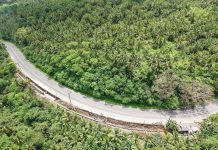By: Sarwell Q. Meniano
TACLOBAN CITY – After the devastation the region has suffered when it was pummeled by supertyphoon “Yolanda,” its economy appears towards recovery. This was disclosed by the regional director of the National Economic Development Authority (NEDA), Bonifacio Uy, who announced that the region’s economy grew by 3.9 percent in 2015. The increase of the region’s economy from previous 2.4 percent makes it the “fastest growing region in the country,” Uy boasted. Uy added that the economic growth of the region was even “higher” compare to other regions which did not suffer from the devastations of Yolanda, considered the world’s strongest typhoon to hit inland.
Yolanda battered the region, particularly Leyte considered the economic center of the region, in 2013 which resulted for its economy to suffer. Based on the report of the Philippine Statistics Authority, as presented by its director Wilma Perante, the region’s economy accelerated by 6.3 percent between 2014 to 2015, gaining P152.21 billion in the process. The services sector posted a 6.8 percent growth, a significant rebound from four percent decline the previous year fueled by strong performance in the transport, storage and communication subsector. NEDA tagged the sector as the strongest driver of the regional economy. The sector has generated thousands of jobs, absorbing 45 percent of the region’s working population first semester of 2015.
“We also observed gradual growth in the value-added share of most components of the services sector, primarily accounted for by the resurgence of businesses. For instance, in Tacloban City, the region’s capital, we see newly-established hotels and food establishments, which is evident of a vibrant service-oriented economy,” Uy said.
Industry sector, which accounts 41.4 percent of the regional economy, recovered from the 3.3 percent decrease in 2014 to 4.4 percent growth last year. Subsectors such as mining and quarrying; construction; and electricity, gas and water supply have shown double-digit growth last year.
“While the manufacturing subsector contributed the largest share to the region’s industry, it contracted by three percent, although better than the 16 percent slump in 2014,” he explained. The NEDA regional chief reported that weak global demand for copper must have affected the supply of metallic inputs in the production of cathodes at the Philippine Associated Smelting and Refinery Corp., one of the heavy industries situated in Isabel, Leyte. Agriculture, the sector which has the majority of the region’s workforce, continued to decline, but at a slower rate from 12.7 percent in 2014 to 3.5 percent in 2015. Farming and forestry recovered from negative 3.6 percent. Fishing also managed to improve from negative 18.2 percent to negative 3.2 percent, according to the PSA. “Broad-based growth was not realized given the setback in the agriculture and fisheries sector – a challenge that consistently hounds the region. Natural threats such as the effects of El Nino and the impact of typhoon Nona have aggravated the already fragile agricultural production of the region after super typhoon Yolanda,” Uy pointed out. Despite economic growth in 2015, poverty incidence in the region has worsened between 2012 to 2015, placing the region as the country’s second poorest, based on the latest Family Income and Expenditure Survey (FIES) result.



